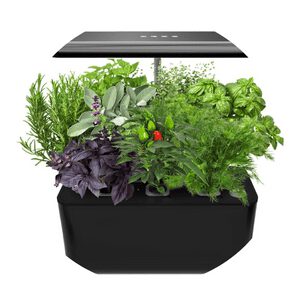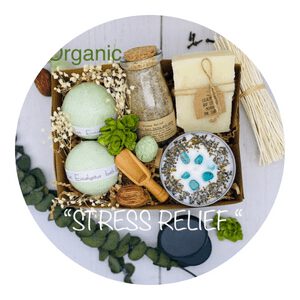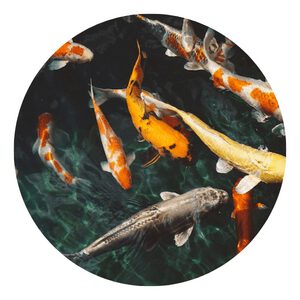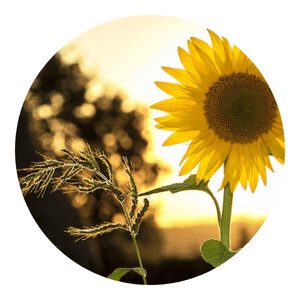How To Start Growing Hydroponic Vegetables
I love growing vegetables and herbs hydroponicallyIt makes my heart feel so warm
The way the plants grow tall and strong
With hardly any work from me at allI can’t believe how wonderful it is
And I’m so glad I made the switch
Hydroponic Menu
What are hydroponic vegetables and why grow them?
Hydroponic vegetables are plants that are grown in water instead of soil.
This method of growing plants is becoming more and more popular, because it is a efficient way to produce high-quality vegetables.
Hydroponic vegetables are not only healthy, but they also taste great. In addition, hydroponic vegetables are easy to grow, even for beginners.
If you are interested in starting your own garden, hydroponic vegetables are a great way to get started.
what do you need to get started?
The benefits of hydroponic vegetables are many.
They include the ability to grow crops year-round, faster growth rates, and the use of less water and fewer nutrients.
If you are interested in getting started with hydroponics, there are a few things you will need to get started.
First, you will need a hydroponic system.
There are a variety of different systems available, so you can choose the one that best suits your needs.
Second, you will need a growing medium.
There are thousands of different types of growing media available, so you can choose the one that best suits your needs.
Vegetables you can grow
List of common veggies that do well in a hydroponic garden
Leafy Greens
Leafy greens are a great way to start growing hydroponic vegetables. They are easy to grow and don’t require a lot of space.
You can start with a small garden and expand as you learn more about hydroponics. The best way to get started is to buy a kit that includes everything you need to get started.
There are many different types of kits available, so you can find one that fits your needs.
Grow strawberries hydroponically and you'll have berries all year long No more waiting for the warmer months You can enjoy these fruity delights All you need is some space and some light And you'll be set to start growing your own Hydroponic strawberries are the way to go!
Chappy The Gardener
Herbs
Hydroponics is a method of growing plants in water instead of soil.
Plants can be grown hydroponically in a variety of ways, including using pots, baskets, or bags filled with an inert material such as perlite, gravel, or vermiculite.
One of the most popular methods of growing plants hydroponically is in a soilless mix. A soilless mix is a sterile mixture of peat moss, vermiculite, and/or perlite that does not contain any nutrients.
When growing herbs hydroponically in a soilless mix, you will need to add nutrients to the water periodically.
One benefit of growing herbs hydroponically is that you can control the amount of nutrients that the plants receive.
Tomatoes
In order to grow tomatoes hydroponically, you will need to start by planting the seeds in a soil-less medium.
You can either use peat moss or vermiculite as your growing medium.
Once the seeds have germinated, you will need to transplant them into larger pots.
Make sure to use a nutrient-rich water solution when watering your plants.
Tomatoes grown hydroponically tend to be more flavorful and juicer than those grown in soil.
Peppers
When it comes to hydroponic gardening, peppers are one of the easiest plants to grow.
This is because peppers do not require a lot of root space, and they are tolerant of a wide range of growing conditions.
In addition, peppers can be grown in either soil or soilless mixes, making them an ideal crop for hydroponic gardens.
If you are new to hydroponic gardening, start by growing bell peppers.
They are easy to germinate and grow, and they are very tolerant of transplanting.
You can start your pepper plants indoors using pots or trays, or you can sow them directly into the hydroponic system.
Once your pepper plants have established a good root system, they will be able to tolerate warmer temperatures and will begin to produce fruit.
Cucumbers
Cucumbers are a popular vegetable that can be grown hydroponically. In order to start growing hydroponic vegetables, you will need to purchase a hydroponic kit.
The kit will come with all of the supplies you need to get started, including a grow light and nutrient solution.
You can also purchase cucumber seeds to grow your own cucumbers.
Squash
The popularity of hydroponic vegetables is on the rise.
This method of growing vegetables does not use soil, but a nutrient-rich water solution in which the plants are grown.
There are many types of vegetables that can be grown hydroponically, including squash.
If you are interested in starting to grow your own hydroponic squash, there are a few things you need to know.
The first step is to choose the right variety of squash. Different varieties of squash are used for different purposes.
You can use zucchinis, for example, for eating or baking, or you can use pumpkins for carving into jack-o-lanterns.
Planting
getting your plants into the hydroponic system
Introducing hydroponic plants into your garden is a great way to enjoy homegrown vegetables all year-round, and it’s surprisingly easy to get started.
You can use a hydroponic system to grow vegetables, fruits, herbs, or flowers indoors or outdoors.
The basic components of a hydroponic system are a water reservoir, grow tray, and growing medium.
Maintenance
keeping your hydroponic system healthy and producing
Maintaining a hydroponic system is key to keeping it healthy and productive.
One of the most important aspects of maintenance is keeping the water levels in the system consistent.
If the water level gets too low, the plants will not get the nutrients they need; if the water level gets too high, the plants may drown.
Another important aspect of maintenance is keeping an eye on the pH levels of the water.
Harvesting
when your hydroponic system veggies are ready to pick!
The best time to start harvesting your hydroponic vegetables is when they are about the size of a golf ball.
You will want to start by harvesting the larger vegetables and then work your way down to the smaller ones.
Be sure to harvest your vegetables regularly, so that they do not get too large or too small.
The benefits of growing hydroponic vegetables
Hydroponic vegetables are a great way to get your daily dose of vegetables, and they have a lot of other benefits, too.
If you’re interested in getting started with hydroponic vegetables, there are a few things you need to know.
The benefits of growing hydroponic vegetables are numerous.
The vegetables you can grow hydroponically are often more nutritious than the ones that are grown conventionally, because they don’t have to be exposed to pesticides or herbicides.
Is growing hydroponics worth it?
In recent years, the popularity of hydroponic gardening has skyrocketed.
People are growing everything from lettuce to tomatoes in their homes using this method.
The great thing about hydroponics is that it is a relatively easy way to get into gardening, and the yields can be quite high. If you are interested in starting your own hydroponic garden.
Is hydroponic growing faster than soil?
faster growth rates. Hydroponic gardening is a very fast growing method.
A hydroponic garden can produce between 4 to 10 times the crop volume of a normal garden in the same amount of time.
What is the difference between hydroponics and aquaponics?
Hydroponics and aquaponics are both types of gardening that doesn’t use soil.
Hydroponics is the practice of growing plants in a water-based, mineral-rich solution.
Aquaponics combines hydroponics with aquaculture, or the farming of fish.
The fish waste provides the nutrients for the plants, and the plants act as a natural filter for the water.
Both methods have their pros and cons, but which one is right for you?
How does hydroponics work?
Hydroponics is a method of gardening that does not use soil.
Plants are grown in a water-based solution that contains all the nutrients they need to thrive.
This method has many advantages over traditional gardening.
It is much more efficient, because hydroponic plants grow faster and use less water.
The plants are also less likely to get diseases, because there is no soil to harbor pests and diseases.
Components of a hydroponic system
There are many different types of hydroponic systems, but they all have some common components.
The most important component of a hydroponic system is the water reservoir. This is where the water and nutrients for the plants are stored.
The water is then pumped up to the plant roots through a pipe or hose.
The plant roots are either suspended in the water or grown in a growing medium such as gravel or coconut fiber.
Advantages of hydroponic systems
Plants are grown in an inert medium and their roots are suspended in water.
Nutrients are dissolved in the water and supplied to the plants as they need them.
This method of gardening has many advantages over traditional soil gardening.
Disadvantages of hydroponic systems
There are many advantages to using a hydroponic system, but there are also some disadvantages.
One of the main advantages of a hydroponic system is that it can be used to grow plants in any climate.
The plants will still need the proper light and temperature conditions, but they can be grown indoors or outdoors.
Hydroponic systems can also be used to grow plants year-round.
Another advantage of a hydroponic system is that it uses less water than traditional gardening methods.
This is because the water is recycled and used over and over again.
In traditional gardening, the water runs off into the ground and is wasted.
Hydroponic system designs
In order to have a successful hydroponic garden, you need to have a well-designed system.
There are many different designs to choose from, and each has its own benefits and drawbacks.
The best design for you will depend on your needs and preferences.
One common design is the Nutrient Film Technique (NFT). In an NFT system, the plants are grown in long channels that allow a thin film of nutrient solution to flow over their roots.
This is a very efficient way to grow plants, and it can be used with both soil-less and soil-based systems.
Another popular design is the Deep Water Culture (DWC) system. In this type of system, the plants are grown in large buckets or tubs filled with nutrient solution.
The roots hang down into the water, where they receive plenty of oxygen and nutrients.
In conclusion,growing hydroponically is a great way to ensure that your plants are getting the nutrients they need without having to worry about soil quality.
Plus, it’s a fun and rewarding way to learn about plant care.
If you’re thinking about starting a garden, consider giving hydroponics a try.
Hydroponic FAQ
Hydroponics is a method of growing plants in a water-based solution. The roots of the plant are submerged in the solution, which provides nutrients to the plant. Hydroponics can be used to grow plants in any environment, including indoors or in areas with limited space.
Hydroponics is a great way to grow plants without using soil. Soil can contain harmful bacteria and pests that can damage plants. Hydroponics also allows for better control over the nutrient levels that plants receive. This means that plants can be grown faster and more efficiently.
Hydroponics is not only for professional growers anymore. Anyone can set up a simple hydroponic system at home with just a few supplies. All you need is a container, some water, and some nutrients for your plants. You can find all of these supplies at your local garden center or online.
Hydroponics is a method of growing plants in a water-based solution instead of soil. The roots of the plants are suspended in the solution, which is typically kept at a pH level between 5.5 and 6.5 and contains all the nutrients the plant needs to grow.
The water-based solution is circulated using a pump, and the oxygen in the water helps the roots to absorb the nutrients they need. The plants are grown in a controlled environment, which means that they can be grown year-round and don’t require as much space as traditional methods of farming.
Hydroponics is a efficient way to grow crops, and it’s often used by commercial growers to produce fruits, vegetables, and herbs.
Hydroponics is a type of gardening that uses mineral nutrient solutions, in water, without soil. Terrestrial plants may be grown with only their roots exposed to the mineral solution, or the roots may be supported by an inert medium, such as perlite or gravel. The main advantages of hydroponics over conventional farming are:
1) Hydroponics can be done on a smaller scale than traditional farming. This means that it is possible to set up a hydroponic system in your own home, without needing a lot of space.
2) Hydroponics does not require the use of chemical pesticides or herbicides. Because the plants are grown in a controlled environment, they are not subject to pests and disease in the same way that plants grown in soil are.
Hydroponics is a method of growing plants in water without soil. Although this type of gardening has many advantages, there are also some disadvantages to consider before starting a hydroponic garden.
One of the biggest disadvantages of hydroponics is the initial cost. Setting up a hydroponic system can be expensive, and it requires special equipment that may not be readily available. Additionally, hydroponic gardens require more maintenance than traditional gardens and may require additional expertise to troubleshoot problems.
Another downside to growing plants hydroponically is that they can be more susceptible to diseases and pests. Because the roots are exposed and the plants are grown in close proximity to each other, diseases can spread quickly throughout a hydroponic garden. Pests can also be difficult to control in a hydroponic system because they can easily hide among the plants.
Hydroponics is a gardening method where plants are grown in water instead of soil. The water is kept circulating and contains all the nutrients the plant needs to grow. You can set up a hydroponic system using different materials, but you will need some basic equipment to get started.
To start growing plants in a hydroponic system, you will need:
-A container to hold the plants and water. This can be anything from a plastic bucket to a fish tank.
-A way to circulate the water and deliver nutrients to the plants. This can be done with a simple pump and tubing or with a more complex aeration system.
-Grow lights if you are not growing your plants in natural sunlight.
-Plant food or nutrient solution to mix into the water.
A hydroponic system is a great way to grow plants without using soil. There are many different ways to set up a hydroponic system, but they all generally follow the same basic principles.
One of the most important things to consider when setting up a hydroponic system is the type of growing medium you will use. There are many different types of growing mediums available, and each has its own advantages and disadvantages. Some common types of growing mediums include gravel, sand, perlite, and vermiculite. Once you have decided on a type of growing medium, you will need to purchase enough to fill your chosen container.
Another important consideration when setting up a hydroponic system is the type of nutrient solution you will use. There are many different types of nutrient solutions available, and each has its own advantages and disadvantages.
Click To Grow
Helps Us Grow – Share If You Like



















